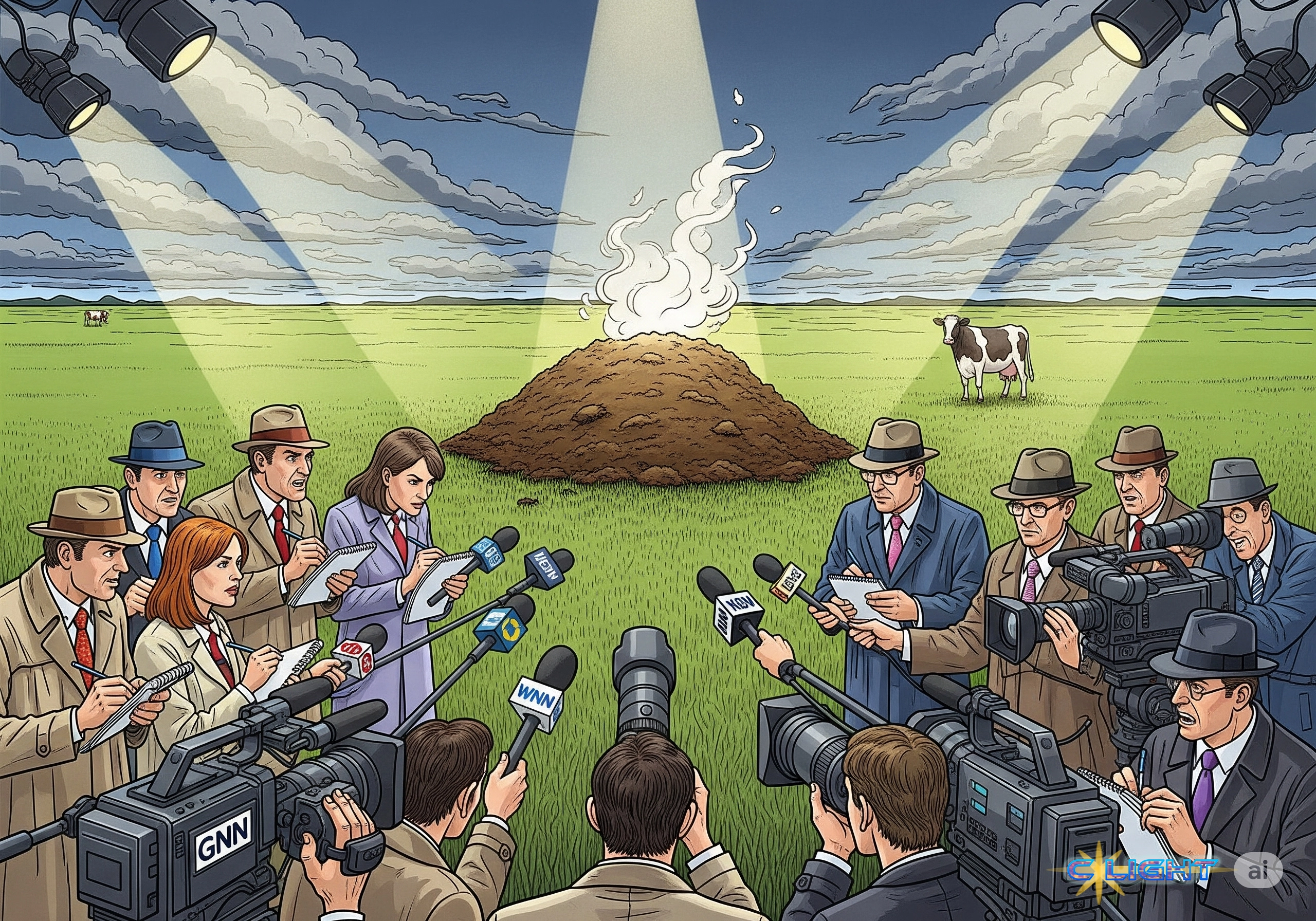The 24-hour news cycle is a beast with an insatiable appetite. In the quiet summer months, when Congress is on recess and the gears of government grind slowly, that hunger becomes ravenous, capable of spinning the thinnest of threads into a tapestry of global significance. The last 24 hours have been a masterclass in this modern phenomenon, a case study in how a flurry of “what ifs” and “maybes” can be spun into a headline-grabbing international drama. A potential summit between the U.S. President and the leader of Russia has dominated the news. But was it ever a real story? Or was it just, as a cynical observer is forced to conclude, a whole lot of conjecture?
Part I: The Birth of the Narrative – Contradictory Leaks
The story was born, as so many are in this administration, in a fog of deliberate disinformation. The first reports, citing the White House’s official line, claimed that Russian President Vladimir Putin, via a U.S. envoy, had formally proposed a summit with President Felonious Punk. This was the preferred narrative, one designed to make the President look strong, sought-after, and central to the resolution of the war in Ukraine.
But almost immediately, a second, contradictory narrative emerged from a New York Times report based on what the President himself had told European leaders. In that version, it was President Punk who had “disclosed his plans” for a one-on-one meeting with Putin, to be followed by a trilateral summit with Ukrainian President Volodymyr Zelensky. So, at the very inception of the story, a fundamental and irreconcilable contradiction was established. Who was lying? Was the White House lying to the American press to project an image of strength? Or was the President lying to his own allies to project an image of control? The diplomatic process began, as it so often does, on a foundation of deceit.
Part II: The De-escalation into Conjecture
Almost as soon as the “story” broke, it began to dissolve in real-time, the journalistic language devolving from firm to flimsy with each new report. What had been a “plan” in the New York Times and a “proposal” in Axios quickly weakened. A report from The Hill used the more cautious and speculative language of the President “weighing” a meeting. By the end of the news cycle, a final report from Bloomberg had downgraded it even further: the President was now merely “eyeing” a summit. It was the journalistic equivalent of watching an ice sculpture melt under a hot lamp. The story was never solid to begin with, and it was disappearing into a puddle of hedges and non-committal language before our very eyes.
Part III: The Real, Contradictory Actions
While this talk of peace and summits filled the airwaves, the administration’s actual, concrete actions were in direct and stunning opposition to its supposed diplomatic intentions. On the very same day the President was celebrating “great progress” with Russia, he was also dramatically escalating his economic war on Russia’s key customers, doubling the tariffs on India for the explicit crime of buying Russian oil.
But the contradictions didn’t stop there. As The Guardian reported, in response to a verbal threat from a Russian official in the preceding days, the President had ordered the repositioning of two nuclear submarines closer to Russian waters. It was an act of reckless, escalatory military posturing being undertaken in the middle of what was being sold to the public as a bold peace initiative. The administration was simultaneously extending an olive branch and brandishing a nuclear sword, a perfect picture of a dangerously incoherent foreign policy.
Part IV: The View from the Other Rooms
A look at the perspectives of the other key players reveals that the summit was likely a non-starter from the very beginning. For Russia, as detailed in the Washington Post, the goal was not a genuine peace. Their likely gambit was to offer a cynical and self-serving “partial ceasefire,” an “air truce” that would halt Ukraine’s most effective tactic—its long-range drone strikes on Russian infrastructure—while allowing Russia’s own ground advance to continue unabated. It was a ploy to “mollify” a frustrated President Punk and get him to delay sanctions, a phony peace designed to lock in a military advantage.
For Ukraine, the entire premise was a non-starter. President Zelensky has been consistent that any deal that requires ceding Ukrainian territory would be, in the words of one official, “totally unacceptable.” The President’s plan to exclude European allies from the meetings and his dismissive attitude toward Ukraine’s own agency made the entire proposal dead on arrival in Kyiv.

A Walk Through the Cow Pasture
This entire episode is not a story of high-stakes diplomacy. It is a story of a diplomatic “non-story,” a 24-hour news cycle fueled by contradictory leaks, cynical gambits, and the desperate need to create the illusion of action. It is, as I have been forced to conclude, a “walk through the cow pasture, barefoot.” It is a messy, dishonest, and ultimately empty exercise in political theater. The only thing real in this entire affair is the ongoing, brutal war in Ukraine, the daily suffering of its people, and the profound failure of a chaotic and incoherent leadership to address it in any meaningful way.
Discover more from Clight Morning Analysis
Subscribe to get the latest posts sent to your email.










